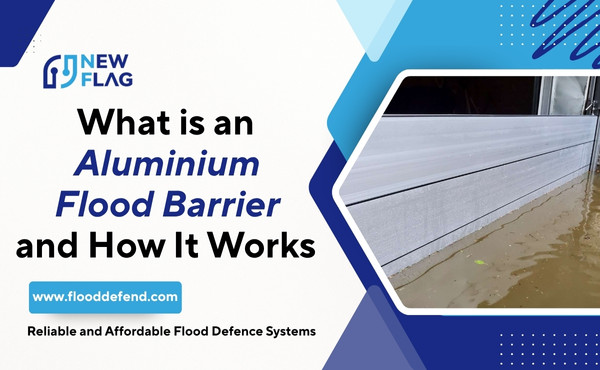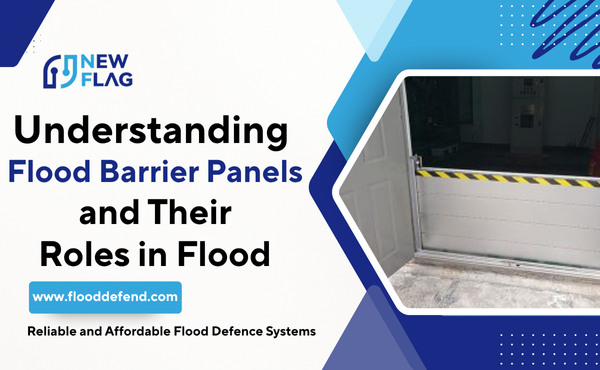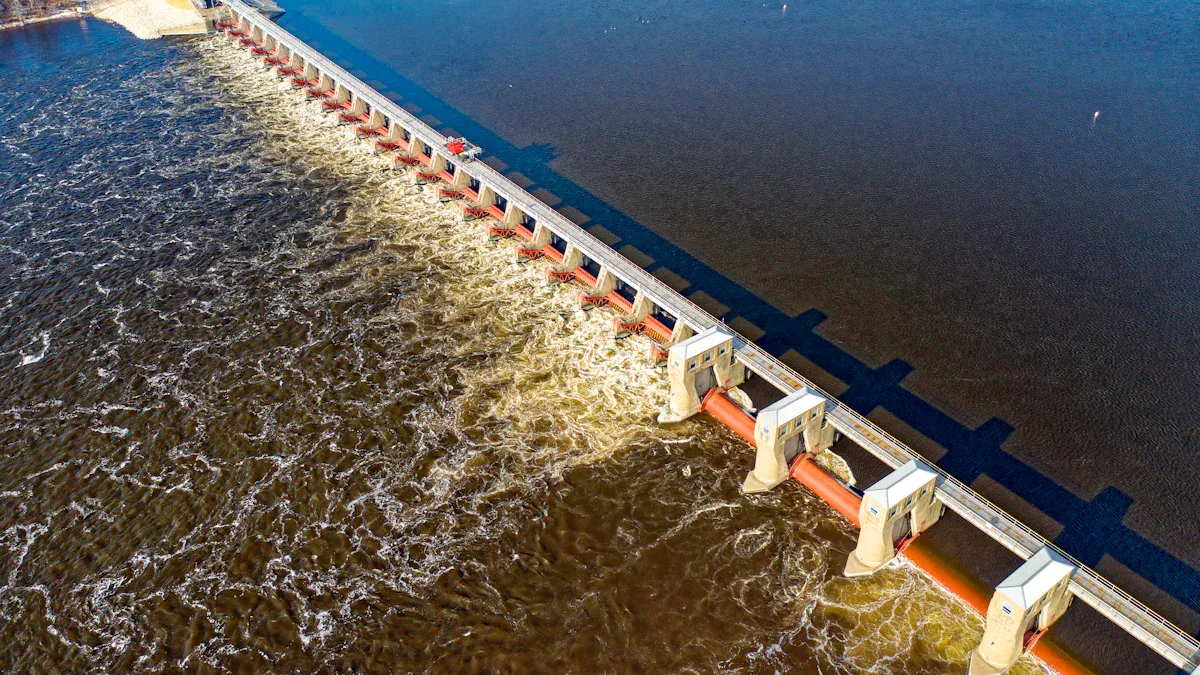
The best flood barriers provide strong defense against rising water and help prevent costly damage. He should match flood barriers to the property’s flood risk, installation needs, and budget for maximum protection. Flood protection solutions play a vital role in flood mitigation strategies and flood control for homeowners and property managers.
They must assess their unique flood risk before choosing the best flood barriers. Effective flood barriers offer reliable defense and support long-term flood protection. Selecting the right barrier ensures proper flood defense and enhances overall barriers for flood events.
Assessing Flood Risk
Local Hazards
Local hazards play a major role in determining the need for flood barriers. Heavy rainfall, overflowing rivers, and blocked drainage systems can all increase the risk of flood. Coastal areas often face storm surges, while inland regions may experience flash floods after sudden storms.
Tip: Residents should check local weather patterns and past flood events to understand their risk level.
Communities near lakes or rivers should pay close attention to seasonal changes. Urban areas with poor drainage may need extra flood protection.
Property Vulnerabilities
Every property has unique vulnerabilities that affect how flood barriers work. Low-lying buildings, basements, and ground-level doors are more likely to let flood water inside. Cracks in foundations or gaps around windows can also allow water to enter.
A property with multiple entry points may need several types of flood barriers. Owners should inspect their buildings for weak spots before choosing a solution.
- Common vulnerabilities include:
- Basement windows
- Garage doors
- Air vents
Flood Zones
Flood zones help people understand the likelihood of a flood in their area. Government agencies often map these zones based on past events and water flow patterns. Properties in high-risk flood zones usually require stronger flood barriers.
People should check official flood maps to see which zone their property falls into. This information guides the selection of the best flood barriers for maximum protection.
Key Criteria for Best Flood Barriers
Durability
Durability stands out as a top priority when choosing flood barriers. Materials like marine-grade aluminum resist corrosion and withstand harsh weather. Strong construction helps barriers last through repeated flood events.
A durable flood barrier protects property for years. Certified options often meet strict standards for strength and reliability. Homeowners and property managers should look for barriers that pass ANSI/FM 2510 certification.
Note: Durable flood barriers reduce long-term costs by minimizing repairs and replacements.
Installation Ease
Easy installation saves time during emergencies. Tool-free installation allows quick setup without special equipment. Lightweight flood barriers make deployment easier for most people.
Some barriers offer customizable sizes to fit different entry points. Simple designs help users install barriers without professional help. Fast installation ensures protection before flood water rises.
| Feature | Benefit |
|---|---|
| Tool-free setup | Quick deployment |
| Lightweight | Easy handling |
| Customizable | Fits various openings |
Effectiveness
Effectiveness measures how well a flood barrier stops water. Certified flood barriers often meet FEMA-compliance standards. High-quality seals and sturdy frames block water from entering buildings.
Effective barriers protect vulnerable areas like doors and windows. Water-tight designs prevent leaks during heavy rain or rising flood water. Property managers should test barriers before flood season starts.
Tip: Effective flood barriers provide peace of mind during severe weather.
Warranty
A strong warranty shows confidence in a flood barrier’s performance. Many manufacturers offer warranties that cover defects and damage. Long-term coverage helps property owners feel secure about their investment.
Warranties vary in length and terms. Buyers should read warranty details before purchasing flood barriers. Reliable coverage supports maintenance and replacement if needed.
- Key warranty features:
- Coverage for defects
- Support for repairs
- Replacement options
Additional Criteria
Flood barriers should be lightweight for easy handling. Customizable options fit unique property layouts. Certified barriers meet safety and performance standards.
Property managers should choose barriers that match their flood risk and building needs. Certified flood barriers offer extra assurance during flood events.
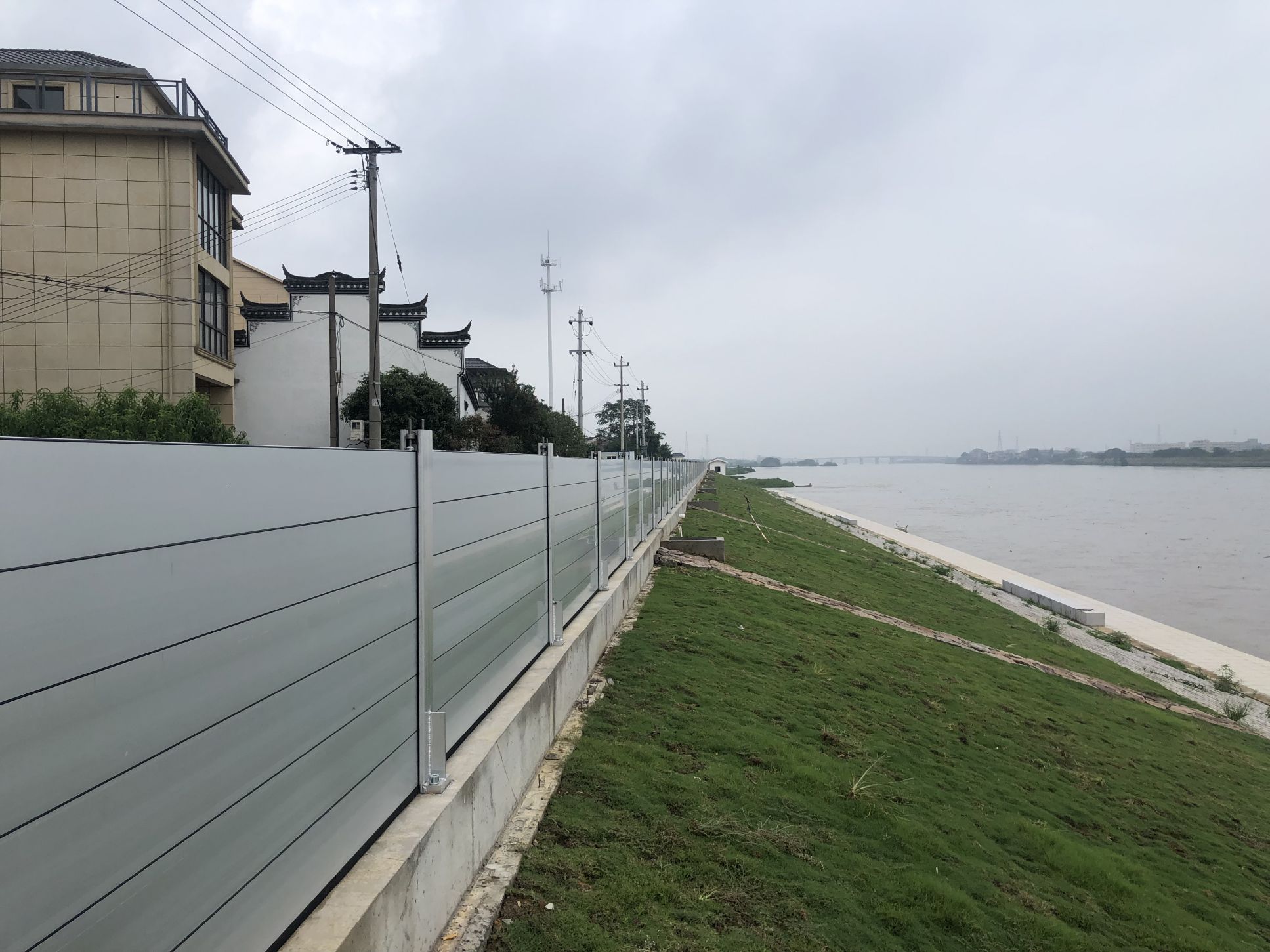
Flood Barrier Types
Permanent Flood Protection
Permanent flood protection offers strong defense against water. Many property owners choose permanent flood barriers for long-term safety. These barriers include deployable composite flood panels and reinforced walls. Permanent solutions stay in place and block water year-round. They work well for buildings in high-risk flood zones. Permanent flood barriers use marine-grade materials to resist water damage. Some permanent options feature advanced seals for extra defense.
Permanent flood protection helps property managers prepare for every flood event.
Temporary Flood Barriers
Temporary flood barriers provide flexible defense during emergencies. People can install these barriers quickly when water rises. Temporary flood prevention options include modular panels and stackable barriers. Deployable composite flood panels offer easy setup and removal. These barriers protect doors, windows, and driveways from water. Temporary flood barriers suit properties with changing flood risks. They give owners a way to respond fast to water threats.
Water-Activated Barriers
Water-activated barriers expand when exposed to water. These flood barriers replace traditional sandbags for defense. Products like PIG Water-Activated Flood Barrier and Quick Dam absorb water and grow in size. Water-activated flood prevention options seal gaps and block water entry. They work well for homes and businesses needing quick defense. Water-activated barriers offer lightweight handling and easy storage. People use them to protect basements and entryways from water.
| Water-Activated Barrier | Feature | Defense Level |
|---|---|---|
| Expandable chemical bag | Lightweight | Moderate |
| Quick Dam | Fast deployment | High |
| PIG Barrier | Absorbs water | High |
Inflatable Barriers
Inflatable barriers use air and water to create a strong defense. These flood barriers include MAKO Inflatable Flood Barriers and Tiger Dam systems. Inflatable barriers expand to block water from entering buildings. They offer permanent or temporary protection depending on the need. Water fills the barrier and forms a seal against flood water. Inflatable flood barriers suit large properties and industrial sites. Innovative flood barriers like Water Gate and Floodblock improve defense and replace sandbags.
Inflatable barriers provide reliable defense for severe flood events.
Comparing Flood Protection Solutions
Pros and Cons
Flood barriers offer different levels of defense against water. Permanent flood barriers provide strong protection and last for years. These barriers cost more and require professional installation. Temporary flood barriers give flexible defense and suit changing flood risks. They cost less and allow quick setup. Water-activated barriers expand when wet and replace sandbags. These flood barriers are lightweight and easy to store. Inflatable barriers use air or water to block flood water. They protect large areas and deploy quickly.
| Flood Barrier Type | Effectiveness | Cost | Ease of Deployment |
|---|---|---|---|
| Permanent | High | High | Moderate |
| Temporary | Moderate | Moderate | High |
| Water-Activated | Moderate | Low | High |
| Inflatable | High | High | High |
Tip: Property owners should compare flood protection solutions before making a decision.
Suitability for Property Types
Residential flood barriers protect homes from water damage. These flood barriers fit doors, windows, and garages. Homeowners choose water-activated barriers for quick defense. Permanent flood barriers suit houses in high-risk zones. Commercial flood barriers defend businesses and offices. These flood barriers cover larger openings and withstand heavy use. Temporary flood barriers help stores and small offices respond to sudden floods. Industrial sites need strong defense and large-scale flood barriers. Inflatable barriers protect factories and warehouses. Permanent flood barriers work well for critical infrastructure.
- Residential flood barriers: Water-activated, temporary, and permanent options
- Commercial flood barriers: Temporary, permanent, and inflatable solutions
- Industrial flood barriers: Inflatable and permanent barriers
Note: The right flood protection solution depends on property type and flood risk.
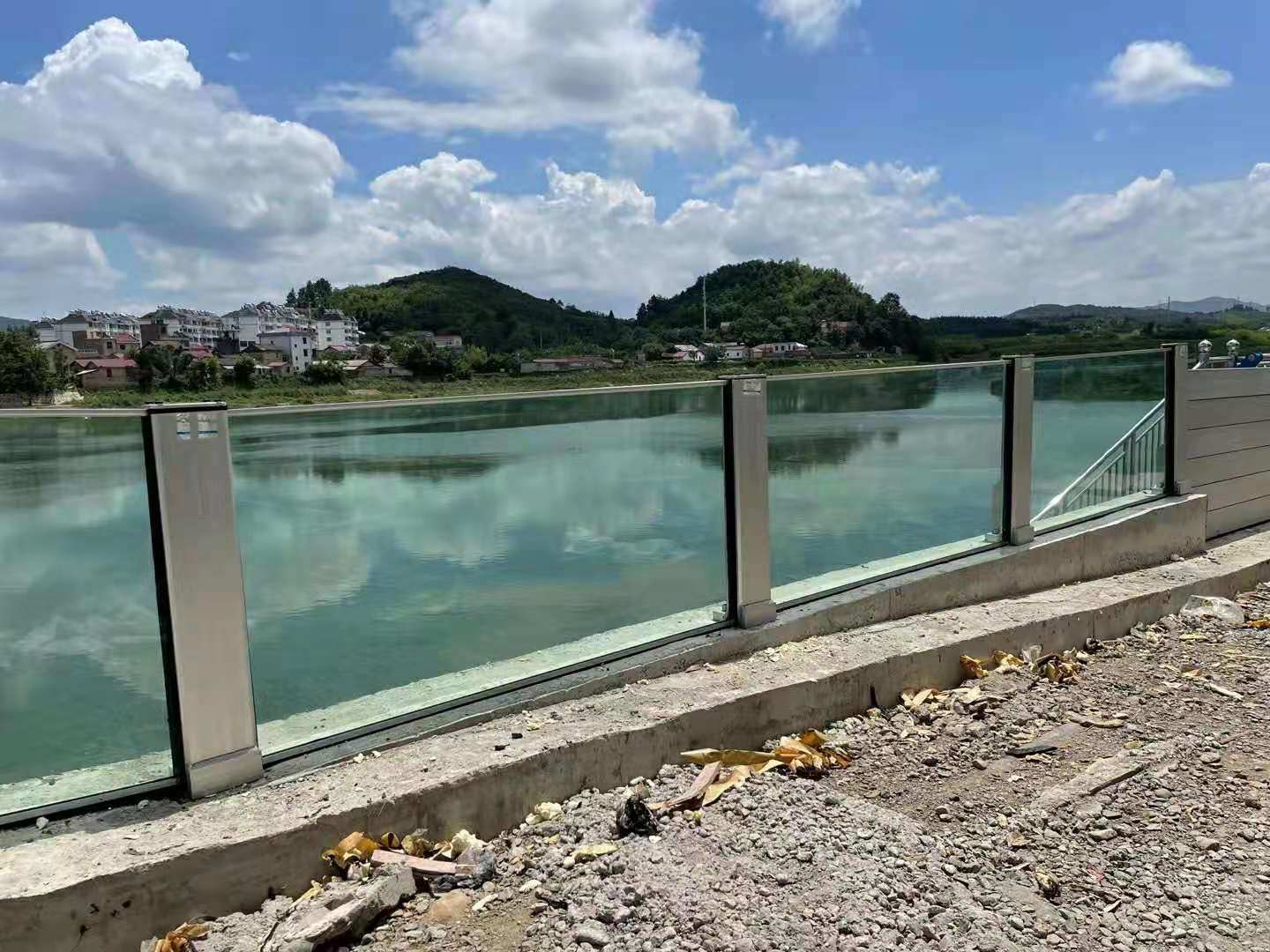
Installation and Maintenance Tips
Preparation
Preparation helps property owners achieve strong defense against water. They should measure entry points and select the right flood barriers for each area. Owners can store each barrier in a dry place for quick access.
Tip: Create a checklist for all barrier locations before flood season begins.
A table can help organize preparation steps:
| Step | Action |
|---|---|
| Measure openings | Record sizes |
| Select barriers | Match to each entry |
| Store barriers | Keep in dry location |
Routine Checks
Routine checks keep flood barriers ready for defense. Owners should inspect each barrier for damage or wear. They can clean surfaces and check seals to maintain effectiveness.
People should test the fit of each barrier before heavy rain arrives. Regular checks help prevent problems during a flood event.
- Inspect for cracks or leaks
- Clean and dry after use
- Test seals and locking systems
Emergency Deployment
Emergency deployment requires fast action for defense. Owners should practice setting up flood barriers before a flood occurs. They can assign roles to family members or staff for quick response.
Note: Quick deployment ensures maximum defense when water rises.
People should follow manufacturer instructions for each barrier. They can keep emergency supplies nearby to support barrier setup.
Conclusion
Choosing flood barriers requires careful evaluation of property risk and installation needs. Flood protection solutions offer defense against water damage and support long-term safety. Reliable flood protection helps owners prepare for the next flood event and protects valuable assets.
Property managers should invest in flood protection solutions that match their building’s vulnerabilities. The right barrier provides strong defense and reduces future repair costs. Flood barriers remain essential for homes, businesses, and industrial sites.
Taking action before a flood strikes ensures maximum protection. Owners who select effective flood protection solutions safeguard their property and maintain peace of mind. Regular checks and proper installation keep barriers ready for emergencies.


